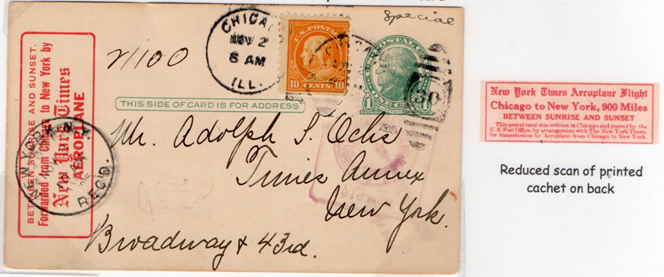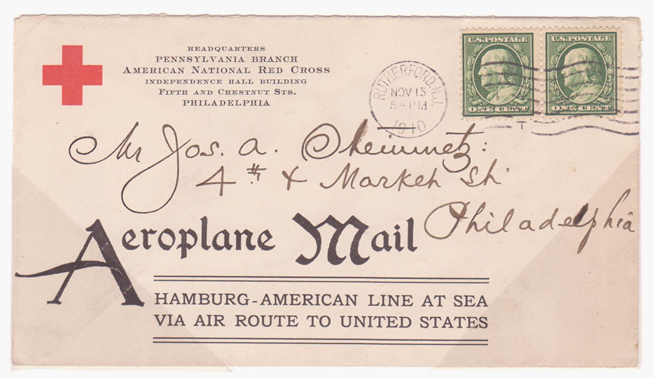

Untied States Pioneer Airmail
1910 – 1916
Jamie O’Bannon
Early in the development of the airplane, many envisioned using planes beyond military service to include the transportation of mail and passengers. To promote this idea, enthusiasts saw an opportunity to show the feasibility of flying mail by fixed-wing aircraft during established aviation meets, demonstration events, circuses and fairs.

Promoters would publicize the events and indicate that mail could be sent by “air mail”. Individuals interested in obtaining “flown” items would deposit addressed cards or covers with appropriate postage in mail boxes provided at the events. A sub-station post office was usually set up to receive and handle mail close to where the airplanes would depart.
Once collected, the postal officials would postmark the items and in many cases a “cachet” would be added. These were prepared to show that the mail was used at the event and many times would include the route numbers which had been provided by the Post Office Department. In many cases, the cachets were used as the postmark. The officials would hand the mail bag to the pilot who would place it somewhere in the airplane or hold it in their lap. Some flights were merely a circle around the airfield while others were flown a small distance to a nearby town and the pilot would drop the bag to waiting post office officials who would then forward the items to the intended destination.
Different styles, dates and ink were used making various collectible varieties. Most exhibitions were assigned six digit route numbers and either had Local Postmaster or United States Post Office Departmental approval. The events generally required that the aviators be sworn in by Post Office officials. Mail prepared for these flights, even if not actually flown, are of collectible interest. A total of 97 United States Pioneer Flights are recorded.
The United States “Pioneer Period” is considered to be from 1910 – 1916. The first flight was to have aviator J.C. ”Bud” Mars fly a Cutiss biplane from a special platform built on the S.S. “Pennsylvania”, off the coast of Long Island and fly to Governors Island in N

ovember, 1910. Mail was prepared and collected but equipment problems prevented this attempt from taking place.
The final Pioneer Flight occurred when the New York Times sponsored a 900 mile flight, Route 635,006, from Chicago to New York City to be completed between October 7 and November 1, 1916. The flight was not
accomplished during this period so an extension was granted now designating it as Route 635,007. Aviator Victor Carlstrom left Chicago on November 2 but was forced down because of darkness. He continued to New York the following day.

No flights were approved during 1917 as the nation focused on supporting the War effort. The first official Post Office Department air mail route did not begin until May 15, 1918; scheduled between Washington and New York with a stop in Philadelphia using U.S. Army pilots and aircraft. The work and commitment of the pilots and organizers during the “Pioneer Period” provided the groundwork necessary to eventually fulfill the dream of a trans-continental airmail system by September 1920.
References:
The Pioneer Airplane Mails of the United States by Thomas J. O’Sullivan
AAMS Seventh Edition Volume Three
U.S. Aerial Mail 1910-1916, Aerophilatelic Exhibit -Jamie O’Bannon